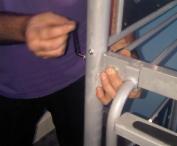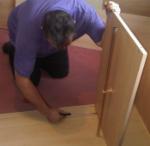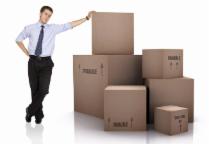Packing service:




We can supply the manpower & packing materials required to safely pack your possessions.
Packers can help with packing your belongings prior to your move.
Our packers are very experienced and can wrap and pack just about everything for you. Fragile items, glass and china along with dismantling flat packed furniture, unpacking or re-assembling flat pack furniture and helping to ensure you can enjoy your new home.
Please call us today on Colchester 01206 865007
General Packing advice and top tips:
Pack a suitcase for each member of the family moving, pack a suitcase as if you’re all going on a 3-day vacation, including changes of clothes, medications, eyeglasses, toiletries, etc. Keep the suitcases separated from all the other items to be moved, such as in your car, at your new workplace etc, so you’ll have everything you need for the first few days without searching through boxes.
Create “Open Me First” boxes- Pick one or two boxes per room as "Open Me First" boxes. Put in them the things you'll need first at your new location. Then mark the sides of the boxes so you'll know which ones are which.
One at a time - Wherever possible, work on packing just one room at a time (instead of several all at once) to keep things focused and organized.
Less is more- Use packing as a way to clean out belongings for donations, a car boot sale, and or the recycling centre.
Off the floor- Instead of the floor, use a completely cleared-off table top or counter in each room for packing boxes. You'll find you get much more accomplished.
Tracking small parts- When taking apart items to be moved, such as tables, securely tape screws and other small parts securely to the underside of the item. You'll always know where to look and save time putting things back together.
Save space- Use towels, pillows and t-shirts you’re packing as extra padding around fragile items. It will save room in your boxes.
Criss-cross tape. Tape boxes along the seams where the flaps meet together. Then tape perpendicularly at the centre of the first tape, forming a cross.
Stacking- Stack boxes with the heaviest on the bottom, lightest on top to prevent crushing.
Heavier boxes lead to injuries, are much more likely to burst their tape or seams and may get dropped.
Tip Packing Electronics
A picture is worth 1000 words- Use a digital or cell phone camera to take pictures of how complicated wiring (computer cords, speaker wires) is hooked up. Be sure to use plenty of light and careful focus so the pictures will be clear. Print each picture and put it in the top of the box holding the item. This will make hooking up the items in your new place much easier.
Always use the original packaging when available. (I realize that most of us don’t have the original packaging for much of anything, but I thought I would bring it up anyway).
Double boxing- For especially fragile electronics, pack them first in a box with an excessive amount of bubble wrap. Then pack that box in a larger box filled with bubble wrap This two-box system seems like a pain but seems to do a better job isolating items from jarring impacts.
Wrap each cord carefully with cable organizers, heavy twist ties or heavy rubber bands. Never throw unwrapped cords into boxes- they get tangled and caught on other items.
Consider getting a label maker and labelling the end of each. Then you'll know exactly which cord you're seeing and where each end connects when you put things back together.
Box Inventory and Labels
Use the thickest, darkest marker you can find for labelling boxes. Pencils, pens or light markers are almost impossible to see even just a few feet away.
Label each box on the two broadest sides, opposite one another. That way if a box gets turned, you can still identify its contents.
Abbreviate room names- Start box labels with the abbreviated name of the room followed by a box number, such as “BTH2-6” for "second bathroom, 6th box." You can then track each box to make sure everything arrived safely.
Label "Open Me First" on boxes where it applies.
Mark "Fragile" where appropriate.
Identify contents- Identify the major contents and where they came from, such as "Medicine Cabinet" or "Linen Closet- Towels and Wash Cloths."
Box Inventory- Keep a clipboard and write down each box's room, box number and contents (graph paper is great for keeping things recorded neatly).
Verifying delivery- When unloading, check off each box as it gets unloaded at your new place. Then you'll know everything arrived safely.
Ask movers to stack boxes in your new place with the labels facing out so that you can easily spot a specific box.
Tip: Some removal companies will offer to sell you boxes at a "reduced" price or even included boxes free with a penalty charge for those not returned in perfect condition. You will be expected to return them within a couple of weeks, putting you under even move pressure to unpack. Check that the boxes are not dirty, second hand and that they are not single layered. Cheap single layered boxes as supplied by some companies are not in our opinion suitable for removals in most cases as they tend to collapse when stacked.
Create “Open Me First” boxes- Pick one or two boxes per room as "Open Me First" boxes. Put in them the things you'll need first at your new location. Then mark the sides of the boxes so you'll know which ones are which.
One at a time - Wherever possible, work on packing just one room at a time (instead of several all at once) to keep things focused and organized.
Less is more- Use packing as a way to clean out belongings for donations, a car boot sale, and or the recycling centre.
Off the floor- Instead of the floor, use a completely cleared-off table top or counter in each room for packing boxes. You'll find you get much more accomplished.
Tracking small parts- When taking apart items to be moved, such as tables, securely tape screws and other small parts securely to the underside of the item. You'll always know where to look and save time putting things back together.
Save space- Use towels, pillows and t-shirts you’re packing as extra padding around fragile items. It will save room in your boxes.
Criss-cross tape. Tape boxes along the seams where the flaps meet together. Then tape perpendicularly at the centre of the first tape, forming a cross.
Stacking- Stack boxes with the heaviest on the bottom, lightest on top to prevent crushing.
Heavier boxes lead to injuries, are much more likely to burst their tape or seams and may get dropped.
Tip Packing Electronics
A picture is worth 1000 words- Use a digital or cell phone camera to take pictures of how complicated wiring (computer cords, speaker wires) is hooked up. Be sure to use plenty of light and careful focus so the pictures will be clear. Print each picture and put it in the top of the box holding the item. This will make hooking up the items in your new place much easier.
Always use the original packaging when available. (I realize that most of us don’t have the original packaging for much of anything, but I thought I would bring it up anyway).
Double boxing- For especially fragile electronics, pack them first in a box with an excessive amount of bubble wrap. Then pack that box in a larger box filled with bubble wrap This two-box system seems like a pain but seems to do a better job isolating items from jarring impacts.
Wrap each cord carefully with cable organizers, heavy twist ties or heavy rubber bands. Never throw unwrapped cords into boxes- they get tangled and caught on other items.
Consider getting a label maker and labelling the end of each. Then you'll know exactly which cord you're seeing and where each end connects when you put things back together.
Box Inventory and Labels
Use the thickest, darkest marker you can find for labelling boxes. Pencils, pens or light markers are almost impossible to see even just a few feet away.
Label each box on the two broadest sides, opposite one another. That way if a box gets turned, you can still identify its contents.
Abbreviate room names- Start box labels with the abbreviated name of the room followed by a box number, such as “BTH2-6” for "second bathroom, 6th box." You can then track each box to make sure everything arrived safely.
Label "Open Me First" on boxes where it applies.
Mark "Fragile" where appropriate.
Identify contents- Identify the major contents and where they came from, such as "Medicine Cabinet" or "Linen Closet- Towels and Wash Cloths."
Box Inventory- Keep a clipboard and write down each box's room, box number and contents (graph paper is great for keeping things recorded neatly).
Verifying delivery- When unloading, check off each box as it gets unloaded at your new place. Then you'll know everything arrived safely.
Ask movers to stack boxes in your new place with the labels facing out so that you can easily spot a specific box.
Tip: Some removal companies will offer to sell you boxes at a "reduced" price or even included boxes free with a penalty charge for those not returned in perfect condition. You will be expected to return them within a couple of weeks, putting you under even move pressure to unpack. Check that the boxes are not dirty, second hand and that they are not single layered. Cheap single layered boxes as supplied by some companies are not in our opinion suitable for removals in most cases as they tend to collapse when stacked.